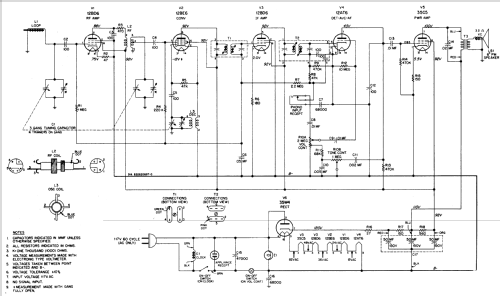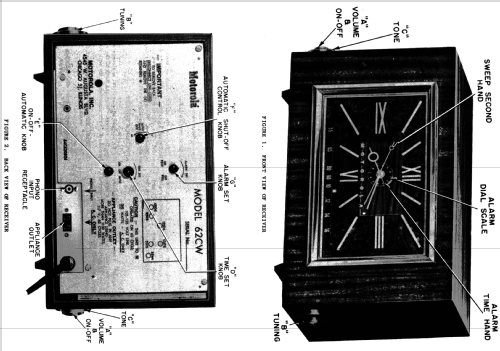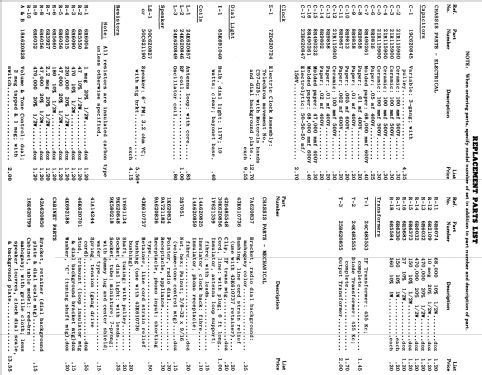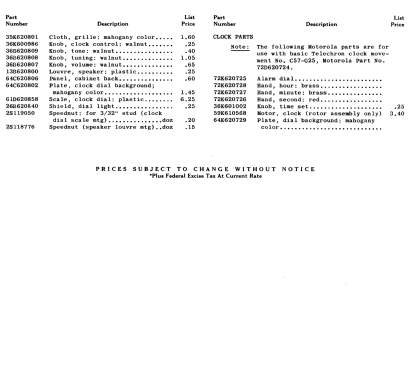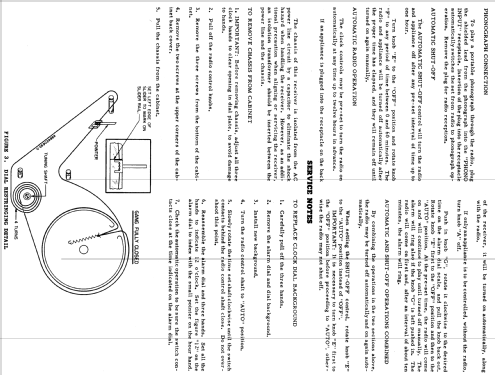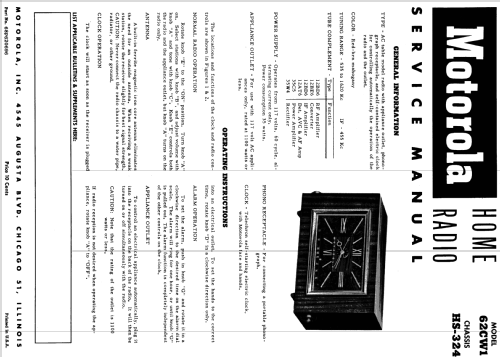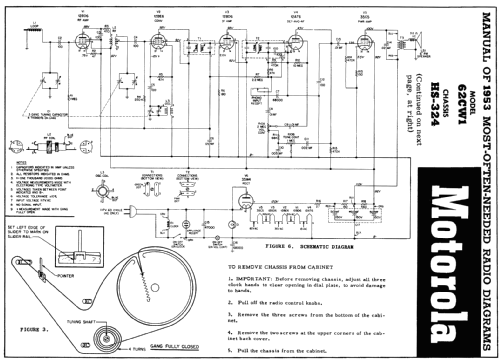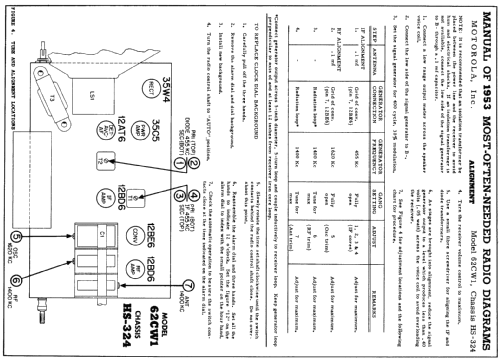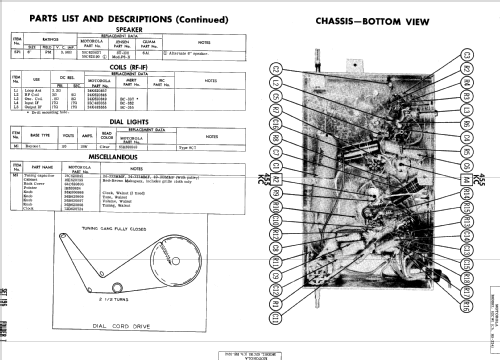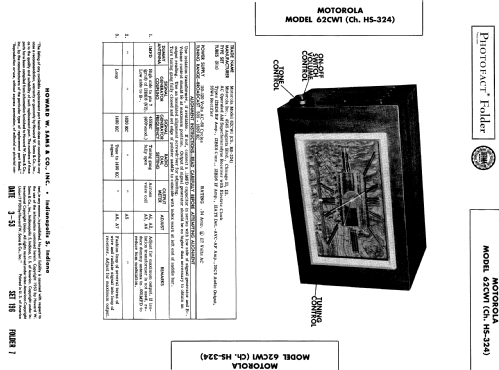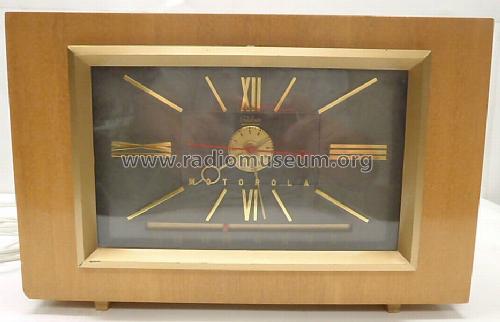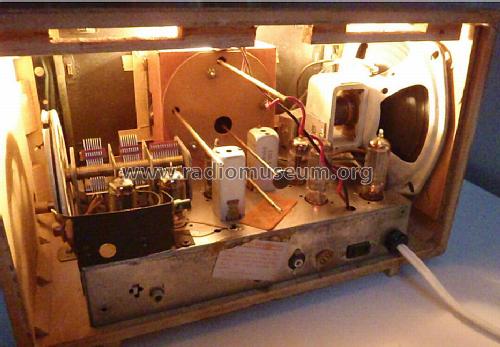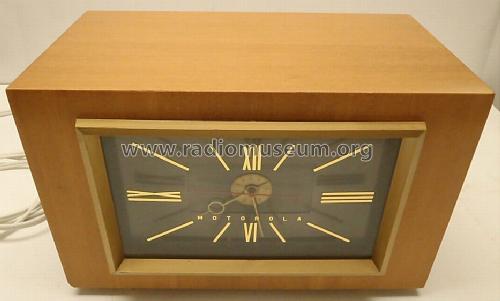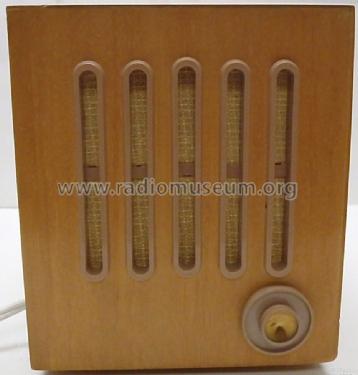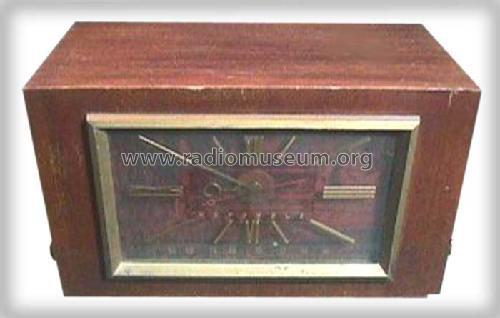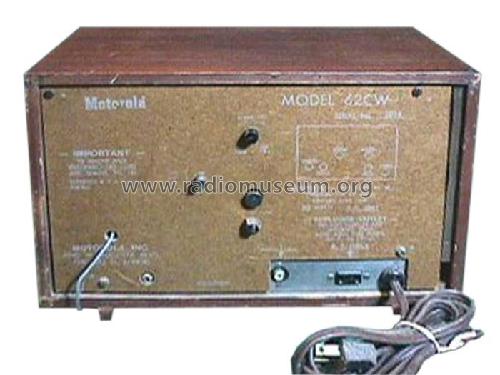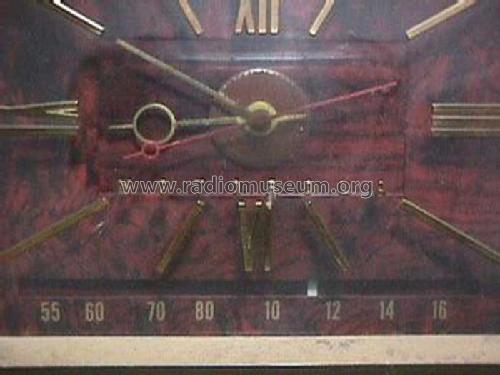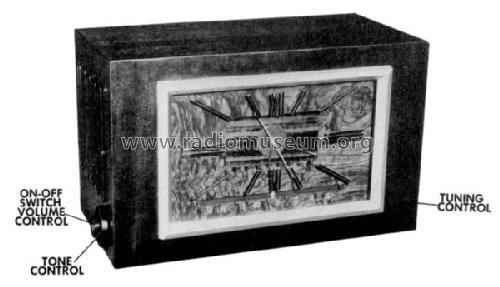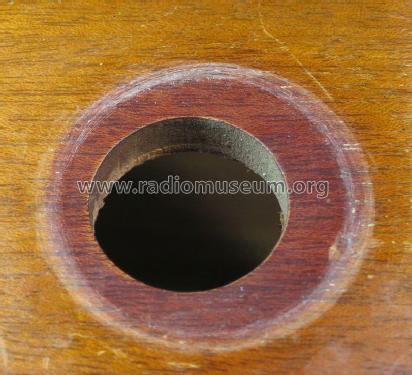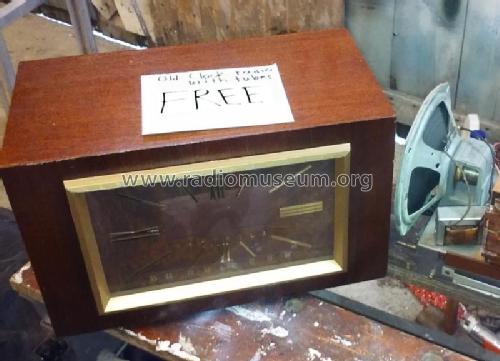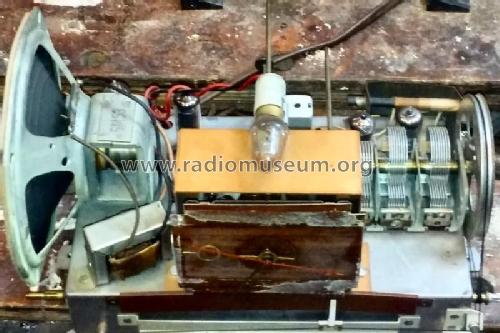62CW1 Ch= HS-324
Motorola Inc. (ex Galvin Mfg.Co. Chicago); Schaumburg (IL)
- País
- Estados Unidos
- Fabricante / Marca
- Motorola Inc. (ex Galvin Mfg.Co. Chicago); Schaumburg (IL)
- Año
- 1953/1952 ?
- Categoría
- Radio - o Sintonizador pasado WW2
- Radiomuseum.org ID
- 88419
Haga clic en la miniatura esquemática para solicitarlo como documento gratuito.
- Numero de valvulas
- 6
- Principio principal
- Superheterodino con paso previo de RF; ZF/IF 455 kHz; 2 Etapas de AF
- Número de circuitos sintonía
- 7 Circuíto(s) AM
- Gama de ondas
- OM (onda media) solamente
- Tensión de funcionamiento
- Red: Corriente alterna (CA, Inglés = AC) / 60 Hz, 117V = 110 -120 Volt
- Altavoz
- Altavoz dinámico (de imán permanente) / Ø 6 inch = 15.2 cm
- Material
- Madera
- de Radiomuseum.org
- Modelo: 62CW1 Ch= HS-324 - Motorola Inc. ex Galvin Mfg.Co
- Forma
- Sobremesa con reloj o Radio despertador.
- Ancho, altura, profundidad
- 14 x 8.5 x 8 inch / 356 x 216 x 203 mm
- Anotaciones
-
Motorola model 62CW1 is an AC operated AM superheterodyne receiver with electric clock.
Color= Mahogany with brushed Gold trim.
- Referencia esquema
- Beitman Radio Diagrams Vol. 13, 1953
- Mencionado en
- Collector's Guide to Antique Radios (7th Edition)
- Documentación / Esquemas (1)
- Photofact Folder, Howard W. SAMS (Date 3-53, Set 196, Folder 7)
- Documentación / Esquemas (3)
- Motorola Folder No. 3301 for 1952.
- Autor
- Modelo creado por Walter Wiesmüller † May 2012. Ver en "Modificar Ficha" los participantes posteriores.
- Otros modelos
-
Donde encontrará 4653 modelos, 2980 con imágenes y 4153 con esquemas.
Ir al listado general de Motorola Inc. (ex Galvin Mfg.Co. Chicago); Schaumburg (IL)
Colecciones
El modelo 62CW1 es parte de las colecciones de los siguientes miembros.
Contribuciones en el Foro acerca de este modelo: Motorola Inc. ex: 62CW1 Ch= HS-324
Hilos: 1 | Mensajes: 2
My wife brought this home from a yard-sale.
"Old clock radio with tubes FREE"

Motorola 62CW(1). Veneer case in good condition, slight crazing. Dust on knobs and behind face plate (which is plastic not glass).Looks good.
Usually I expect a 1952 radio will have a perished power-cord; this was in fine safe condition. So I put it in the driveway with a switch so I could turn it on from a few feet away, in case the filter cap burst. Hmmm. It humed very very low.
I fiddled the too many switches for the clock function, discovered I was turning the Tone not the Volume, and got static. I dialed down the band and got WBZ, Boston, as good as could be expected, since WBZ is hundreds of miles away! I came up the band and got the local 5KW AM station in really great quality.
The tuning cord stuck at 1500KC so I took the chassis out. When you try this, be sure the clock hands are all horizontal so they do not foul the rectangular cut-out.
The insides are in beautiful condition. Almost no dust inside. One wax-cap is oozing wax, others look fine. Several tubes are Motorola, probably original; two are RCA so vintage replacements. Dial-lamp is burned-out and an odd 117V bayonet type.
I've had it playing several hours now. YouTube video, 29 seconds You can hear the tone change as the camera moves near the speaker; I didn't fake this.
No sign of stress. Drifts a bit in the first 30 minutes; I remember most AM tube radios did when new.
Circuit shows an RF stage, a deluxe feature, and explains why it pulled WBZ so clearly despite distance and the racket on the power lines in my town.
Paul Reid, 18.Jun.17




